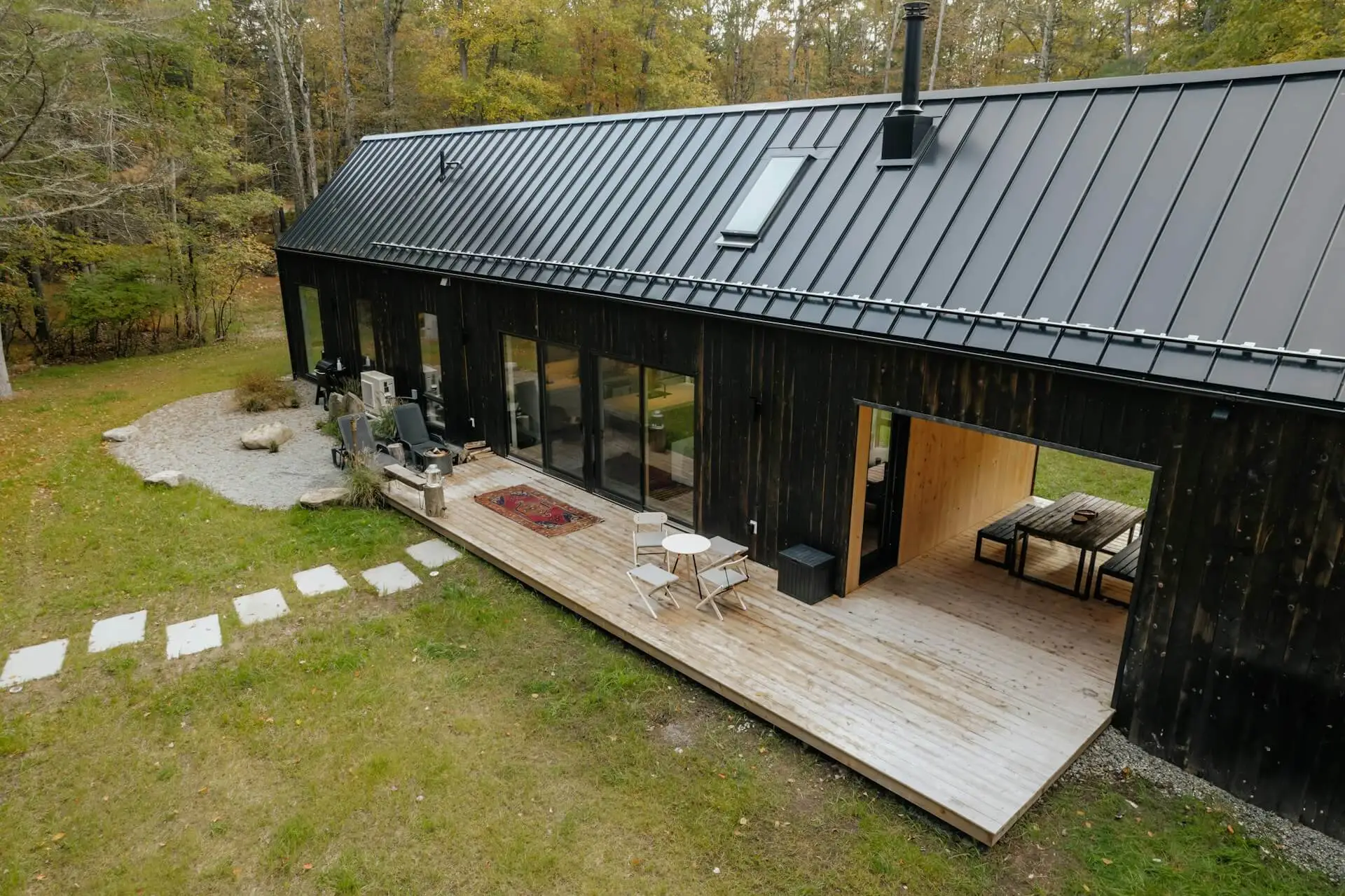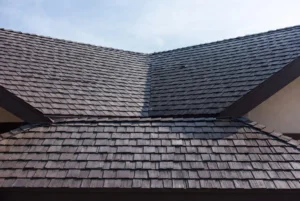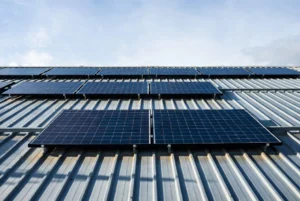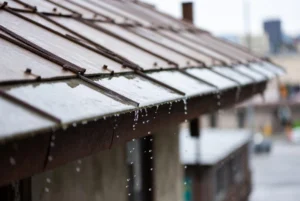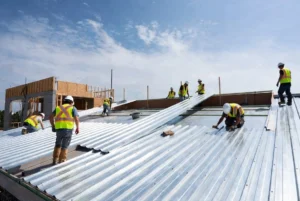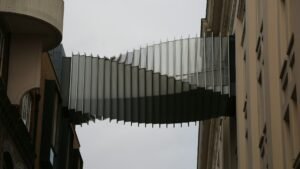I’m going to be straight with you about standing seam metal roofs. No BS. No sugar coating. I’ve spent years watching homeowners throw money at roofs they didn’t understand. And I’m tired of seeing people get burned.
So let me break down what you actually need to know about standing seam metal roofing before you drop $50,000 on your roof.
What Even Is a Standing Seam Metal Roof?
Here’s the thing most contractors won’t tell you upfront.
A standing seam metal roof is basically metal panels with raised vertical seams that lock together. The fasteners hide underneath so you don’t see any screws.
It’s clean. It’s sleek. And it costs a fortune. But that’s not the whole story.
The Three Types Nobody Explains Clearly
Mechanically Seamed Panels: The premium option. A machine crimps the seams together. Most weather-tight. Also most expensive.
Snap Lock Panels: Middle ground. Panels snap together with concealed clips. This is what most residential standing seam metal roofs use.
Nail Strip Panels: Budget version. Uses screws instead of clips. Saves money but loses performance.
I’m going to be real with you. Skip the nail strip unless you’re broke.
Standing Seam Metal Roof Price: What You’re Actually Paying
Let me hit you with numbers that matter.
The average standing seam metal roof price isn’t what you think. It’s worse.
Cost Breakdown That Actually Makes Sense
Steel standing seam: $16 per square foot installed Aluminum standing seam roof: $18 per square foot Galvalume standing seam metal roof: $16-17 per square foot Copper: $30-50 per square foot So on a 2,000 square foot roof? You’re looking at $32,000 to $36,000 for steel or aluminum.
That’s the real standing seam metal roof cost most homeowners face.
Why the Standing Seam Metal Roof Cost Per Square Foot Varies So Much
Location kills your budget. Rural areas? Cheaper labor. Major cities? Add 30%.
Standing seam metal roof panels from different manufacturers have different price points. McElroy Metal costs more than generic brands.
The complexity of your roof matters too. More penetrations? More money.
Installation experience drives cost up. But cheap installation will cost you more later.
Standing Seam Metal Roof Installation: The Process Nobody Shows You
I’m going to walk you through what actually happens during a standing seam metal roof installation.
Most people have zero clue what they’re paying for.
Step 1: Tear Off the Old Roof
Your crew rips off everything down to bare decking. This takes 1-2 days depending on roof size.
They inspect every board. Rotten wood gets replaced before anything else happens.
This is where hidden costs show up. Nobody knows how bad the decking is until the old roof comes off.
Step 2: Lock Strips Go On First
These metal strips attach to your roof edges. They hold the standing seam roof panels in place.
Without proper lock strips? Your panels blow off in the wind. Simple as that.
Step 3: Ice and Water Shield Changes Everything
Here’s what separates amateurs from pros. High-heat ice and a water shield goes over the entire deck.
Regular ice and water shield sticks to metal panels. High-heat doesn’t. This matters when metal expands and contracts.
Step 4: Panel Installation Is Where Skill Shows
Each standing seam steel roof panel locks into the next one with clips. Two screws per clip.
The first panel hooks onto the rake lock strip. Every panel after that snaps or crimps together.
Mess this up? You’ll have leaks within a year.
Step 5: Z Bar and Ridge Capping Finish It
The Z bar fills gaps between panel ribs and the roof ridge. Standing seam metal roof details like this prevent water intrusion.
Ridge capping closes everything at the peak. Your roof is now sealed.
The Materials That Actually Matter
Let me break down the stand and seam metal roofing material options.
Steel: Most popular. Comes with Kynar 500 painted finish. 30-50 year lifespan.
Aluminum standing seam roof: Best for coastal areas. Won’t rust. Softer metal so hail damage is more likely.
Galvalume: Steel coated with aluminum and zinc. Great corrosion resistance. Budget friendly.
Copper: Premium option. Lasts 100+ years. Develops patina over time. Stupid expensive.
The Painted Finish Nobody Talks About
That Kynar 500 finish on standing seam metal roofing panels? It’s not just for looks.
It protects the metal from rust. It keeps colors from fading for 30 years. It adds reflectivity to reduce cooling costs.
Cheap paint jobs fail in 10-15 years. Kynar 500 is worth the extra money.
Standing Seam Metal Roof Colors That Impact Value
Most homeowners obsess over standing seam metal roof colors for curb appeal.
But color affects performance too.
Darker colors absorb more heat. Your AC works harder. Energy bills go up.
Lighter colors reflect sunlight. Better for hot climates. Lower cooling costs.
Black standing seam metal roof looks incredible. But it’s the worst choice for energy efficiency in warm areas.
Popular residential colors: Charcoal gray, bronze, forest green, barn red.
Pros Nobody Argues With
I’m going to give you the wins on residential standing seam metal roof installations.
Longevity: Steel lasts 30-50 years. Premium metals over 50 years. Asphalt shingles die in 20.
Energy efficiency: Reflective properties cut AC usage by 25% in hot climates. Real money saved.
Curb appeal: Clean lines. Modern look. Increases home value immediately.
Low maintenance: No moss. No algae. No shingle blow-offs every storm.
Versatile: Works as accents with other materials. Looks good on porches, bay windows, anywhere.
Cons That Kill Deals
Now the part contractors hate discussing.
The Price Problem
Standing seam metal roof price is 2-3x more than asphalt shingles. That’s a $40,000 difference on average homes.
Most people can’t justify that math. Even with a longer lifespan.
Noise When It Rains
Heavy rain on a seam roof sounds like drums. Solid decking helps. Wood fiber insulation helps more.
But you’ll never completely eliminate rain noise. If that bothers you, reconsider metal.
Climate Limitations
Seamless metal roof performance depends on your climate. Steel rusts faster in humid coastal areas.
Aluminum dents easier in hail-prone regions. Choose the wrong metal for your area? Premature failure.
Complex Roofs Cost More
Multiple penetrations? Lots of roof planes? That standing seam metal roof installation gets expensive fast.
More transitions mean more labor. More chances for installation errors. More money out of your pocket.
Standing Seam Metal Roof Near Me: Finding Quality Installers
Searching standing seam metal roof returns hundreds of contractors. Most suck at metal roofing.
What to Look For
Ask how many standing seam metal roofs they install annually. Anything under 20? Keep looking.
Request photos of recent work. Check for clean seam alignment and proper flashing details.
Verify they use high-heat ice and a water shield. Regular underlayment is a red flag.
Ask about their panel source. Site-formed or factory panels? Factory is usually better quality control.
Red Flags to Avoid
Contractors pushing nail strip panels to save money. That’s not standing seam. It’s garbage.
Companies that also do asphalt shingles but “dabble” in metal. Specialization matters.
Anyone who can’t explain standing seam metal roof details clearly. They don’t know what they’re doing.
Quotes significantly below market rate. You get what you pay for with metal roofing.
How to Install a Standing Seam Metal Roof: Should You DIY?
People ask me about DIY standing seam roof panels installation constantly.
My answer? Don’t.
Unless you’re experienced with metalwork and have proper tools, you’ll screw it up. And fixing mistakes costs more than hiring pros.
Standing seam metal roof machine rentals exist. But operating them requires skill.
One bad crimp? Water gets in. One misaligned panel? Your whole roof looks crooked.
Save the DIY energy for other projects.
Minimum Slope for Standing Seam Metal Roof
Technical detail most people skip: minimum slope for standing seam metal roof matters.
Snap lock systems need 3:12 pitch minimum. That’s 3 inches of rise per 12 inches of run.
Mechanically seamed systems work on ¼:12 slopes. Almost flat. This is why they cost more.
Install snap lock on too-flat roofs? You’ll have standing water and leaks within months.
Standing Seam Metal Roof Residential Applications
Standard seam metal roofing works great on homes. But not all homes.
Cape Cod style houses with simple roofs? Perfect candidate. Clean lines showcase the seamless steel roofing aesthetic.
Complex Victorians with 15 roof planes? Nightmare installation. Costs skyrocket.
Modern contemporary homes? A standing seam was made for this style.
Ranch houses? Works well. Especially with low-maintenance requirements.
Comparing Standing Seam Metal Roof Panels
Different standing seam roof panels serve different purposes.
Meridian panels: Snap together. No clips. Easier installation. Good for DIY-minded homeowners.
Medallion-Lok: 1.75″ seams. Premium look. Best for custom homes wanting high-end appearance.
138T symmetrical panels: Can remove and replace individual panels. Great for future repairs.
MS2 mechanically seamed: Most weather-tight. Required for ultra-low slopes.
Choose based on your roof pitch, budget, and performance requirements.
Standing Seam Metal Roof Texture Considerations
Standing seam metal roof texture affects both looks and function.
Smooth finishes show oil canning more. That wavy appearance in flat panel areas.
Striations (light texture lines) hide oil canning. Stiffening ribs do the same.
Most residential applications use light striations. Balance between aesthetics and performance.
Heavy textures collect dirt. Smooth finishes stay cleaner longer.
Standing Seam Metal Roof Details PDF Resources
Want technical specs? Standing seam metal roof details PDF files from manufacturers are gold.
McElroy Metal provides complete installation manuals. Free downloads. Everything from clip spacing to flashing details.
Western States Metal Roofing has detailed guides too. Cover every panel type they offer.
These PDFs show proper standing seam metal roof details that separate good installs from disasters.
Download them before hiring anyone. Know what proper installation looks like.
The Warranty Trap Everyone Falls Into
Lifetime warranties on standing seam metal sound amazing. Until you read the fine print.
Material warranty? Usually 40-50 years on premium systems. Covers panel defects only.
Paint warranty? 30 years max on Kynar 500. Pro-rated after 10 years.
Installation warranty? Depends entirely on your contractor. Most offer 10 years labor.
Weather damage? That’s your homeowner’s insurance problem. Not warranty coverage.
“Lifetime” doesn’t mean what you think it means.
When Standing Seam Metal Roofing Makes Sense
You’re staying in your home for 15+ years. The longevity math works out.
Your area has extreme weather. Metal handles storms better than shingles.
Energy costs are high. The reflective properties pay back over time.
You value aesthetics. The clean look of standing seam metal roofing increases property value.
Maintenance annoys you. Set it and forget it for decades.
When It Doesn’t Make Sense
You’re flipping the house. ROI doesn’t justify the standing seam metal roof cost.
Your roof is complex. Multiple valleys and penetrations make installation prohibitively expensive.
You’re on a tight budget. Three times the cost of shingles isn’t feasible.
You hate rain noise. Even with insulation, you’ll hear storms.
My Final Take on Standing Seam Metal Roof
Look, standing seam metal roof installations are premium products with premium price tags.
They’re not for everyone. And that’s okay.
If you’ve got the budget and plan to stay put, they’re incredible. Long-lasting. Low maintenance. Great looking.
But if you’re stretching financially to afford metal? Maybe shingles make more sense for now.
The worst decision is overpaying for poor installation. Quality matters more than material choice.
Do your homework. Find experienced installers. Verify their work. Get multiple quotes.
And remember: the cheapest bid usually costs the most in the end.
FAQs About Standing Seam Metal Roofs
How much does a standing seam metal roof cost?
Expect $16-18 per square foot for steel or aluminum. Total project costs range from $32,000-$50,000 for average homes. Premium metals like copper can reach $50+ per square foot.
What’s the difference between standing seam and regular metal roofing?
Standing seam uses concealed fasteners hidden under the panels. Regular metal roofing (exposed fastener) has visible screws that penetrate the panel face. Standing seam is more weather-tight but costs significantly more.
How long does a standing seam metal roof last?
Steel with Kynar 500 finish lasts 30-50 years. Premium metals like copper, stainless steel, and zinc last 50-100+ years with proper maintenance.
Is standing seam metal roof worth the cost?
If you’re staying in your home 15+ years and value low maintenance, yes. If you’re flipping or on a tight budget, probably not. The ROI depends on your timeline and priorities.
What’s the minimum roof pitch for standing seam?
Snap lock systems need 3:12 minimum. Mechanically seamed systems work on slopes as low as ¼:12. Installing on improper pitch causes water pooling and leaks.
Can I install a standing seam metal roof myself?
Unless you’re experienced with metalwork, no. Proper installation requires specialized skills and tools. DIY mistakes cost more to fix than hiring professionals initially.
Does standing seam metal roof reduce energy costs?
Yes, reflective properties can reduce AC usage by up to 25% in hot climates. Darker colors absorb more heat. Lighter colors perform better for energy efficiency.
What causes noise on metal roofs when it rains?
Rain hitting metal panels creates drumming sounds. Solid decking and wood fiber insulation reduce but don’t eliminate noise. Heavy downpours will always be audible.
Standing seam metal roofs deliver unmatched longevity and performance when installed correctly by experienced professionals who understand both material properties and local climate requirements.

